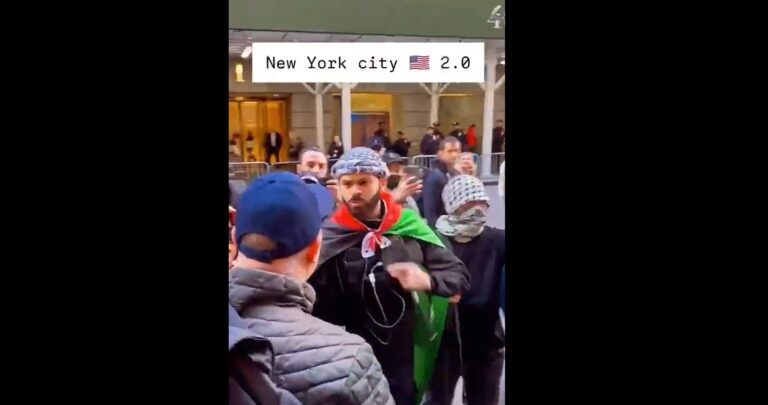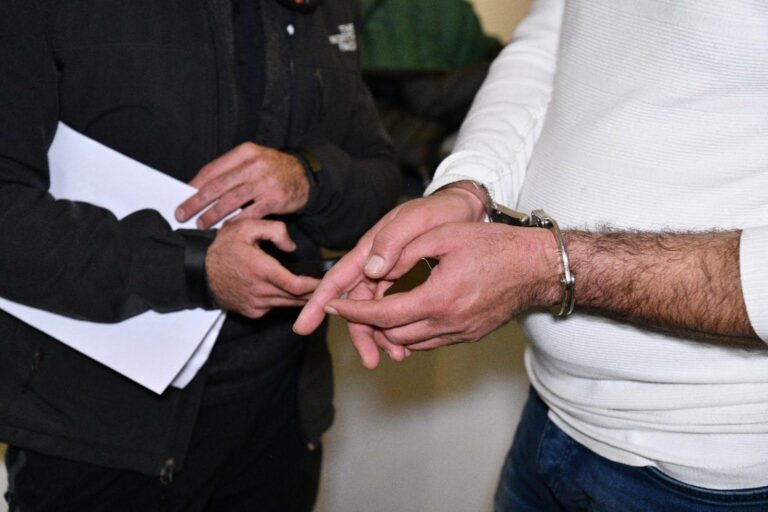A highway shoulder is where New York state troopers spotted Luke Patterson, walking by himself around 2 a.m. after his car became disabled. By the end of the encounter in rural New York, the 41-year-old chef would be killed by a trooper’s gunfire.
Authorities say the trooper shot him when he made a sudden movement toward the cruiser after behaving strangely. The man’s family said he had been having psychiatric problems but posed no threat to anyone.
Unlike many other police shootings across the U.S., no video of the May 23 confrontation exists to help determine what happened.
That’s because New York remains one of only five states where the primary state law enforcement agency is not equipped with dashboard cameras, according to a nationwide Associated Press survey.
Four of those states — Rhode Island, New Hampshire, New York and Massachusetts — are in the Northeast.
Hawaii’s primary state law enforcement agency also does not have dashboard cameras, but it doesn’t have a state-level highway patrol, so it has far fewer interactions with citizens.
“We don’t know what happened, other than what they say happened,” said Luke Patterson’s father, Mark Patterson.
The New York agency lacks body cameras too. It says it once employed VHS and later digital cameras on a limited number of vehicles, but it didn’t have the funds to maintain the VHS equipment and the digital cameras required “costly maintenance.”
“It’s astonishing that the New York State Police have no video accountability,” said Christopher Dunn, legal director of the New York Civil Liberties Union.
While use of dashboard cameras is common, the AP survey found most primary state law enforcement agencies do not have body cameras.
More than a dozen reported implementing body cameras in some form or taking part in a pilot program. Those include agencies for the two largest states by population, California and Texas.
New York City’s police department, the nation’s biggest, finished its rollout of about 20,000 body cameras this year.
Law enforcement experts praise the use of police cameras, arguing that the technology can increase transparency and is well worth the cost. They also say the cameras can be a benefit to both officers and citizens.
That point has been highlighted in several cases in recent years:
— Body camera footage cleared a Texas trooper after he was falsely accused of sexual assault by a woman he arrested.
— Dashboard camera footage sparked protests over the killing of Laquan McDonald, a black teenager who was shot by a white Chicago police officer. The footage showed the teen veering away from authorities, images that contradicted officers’ claims that he lunged at them with a knife. The officer, Jason Van Dyke, was ultimately convicted of second-degree murder.
— Body camera footage played a key role in the conviction of a former Dallas-area officer who shot and killed a black, unarmed 15-year-old boy. The jury was unconvinced by the officer’s argument that he feared for his partner’s life when he opened fire into a car driving away from a large house party in 2017.
New York State Police, an agency that had about 4,975 sworn members late last month, says it has no plans to implement dashboard or body cameras but continues to “evaluate new technologies.”
The technology gap shocked the parents of Luke Patterson, the restaurateur who was killed on Interstate 84 in Orange County, a couple of hours north of New York City.
“Where were the body cams?” said his mother, Elena Patterson.
Authorities found Luke Patterson walking on a highway shoulder after they responded to a report of a vehicle abandoned in the road.
One trooper got out to talk with Patterson while a second drove alongside. State police Maj. Pierce Gallagher said Patterson ignored the troopers and did not comply with any commands. The trooper on foot fatally shot Patterson when he made a “sudden movement” to try to open the police car door, Gallagher said.
Patterson had been diagnosed as bipolar and went through periods of taking medication for the illness, according to his family. Relatives said they’d noticed a change in his behavior in the days before he was shot, and a friend of his called them to warn he’d apparently been having hallucinations.
Mark Patterson said that on the night his son was shot, Luke had stopped at a gas station but didn’t have his wallet and subsequently ran out of gas on the highway.
He said the lack of police cameras shows political “stupidity” and a lack of courage from state lawmakers.
The office of New York Attorney General Letitia James has said it will investigate the killing. In a report on a separate death, the office recommended in May that state police get body cameras.
State police declined to specify what factors prevent it from getting cameras but issued a statement saying it believes they are effective investigative tools.
Thomas Mungeer, president of the New York state troopers Police Benevolent Association, said he does not oppose dashboard cameras but is also not advocating for the technology.
Ronal Serpas, a criminality and justice professor at Loyola University New Orleans who previously led law enforcement agencies in Nashville, New Orleans and Washington state, said it is “nonsensical” for a government to forgo investing in police cameras because of costs.
“In 2019, it’s not an argument that I think has any weight at all,” he said.
(AP)












One Response
Interesting that the blue states are lagging in police video use. Probably because their governments are in the back pocket of unions, including police unions.